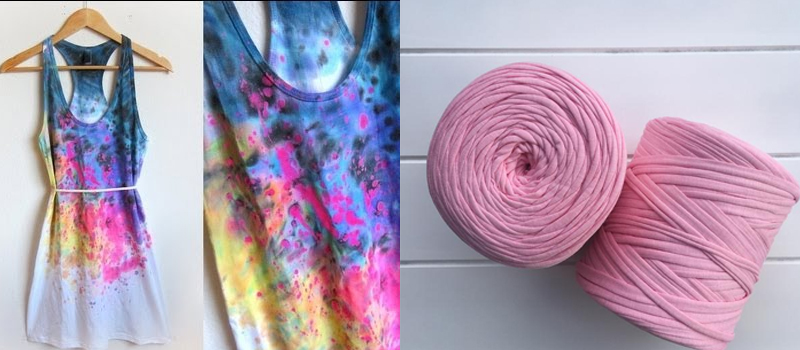If the world population continues to grow as expected there will be more than 8.5 billion people on the earth by 2030. In conjunction with population growth apparel consumption will increase which will have a major impact on water usage, CO2 emission, chemical use, and waste disposal. Clothing is not a sustainable resource and if we are to do something about lessening the detrimental impact on the environment something has to be done. That is why using recycled fabric to make yarn is becoming more and more popular. Creating sustainable yarn from recycled fabric makes fashion sustainable. Recycling clothes is a way of putting fashion first without have to put the environment second. Recycling is a way to turn used garments into new fibers, yarn, biodegradable pulp and eventually fabrics to make new garments that anyone can wear with a clear conscience. The process of recycling cotton and viscose fibers uses less chemicals and water and emits less CO2 than virgin fabrics, prolonging the world’s resources. If more garments can be recycled the volume of new garments made from recycled, biodegradable fibers can increase. If even one kilogram of clothing is recycled instead of being manufactured from virgin sources it will save thousands of liters of water and significantly reduce CO2 emissions and chemical usage. Innovative technology is used to transform high cellulose waste into natural, pure dissolving pulp in an efficient process that reuses chemicals.
The Production of Clothing
Customers are unaware of what goes into making a garment before it is worn for the first time. The process is long and involves many different producers. One producer may be involved in making the yarn, another in weaving it into fabric, and yet another in making a garment from the fabric. The entire process consumes an enormous amount of natural resources, energy, and time. Used garments are disposed of in several different ways like second-hand shops or hand-me-downs, but mostly they end up on landfills. Very few garments are recycled because cotton and viscose fibers are difficult to recycle on a large enough scale with satisfactory quality. The latest technology is capable of dissolving natural fibers like cotton into new biodegradable pulp that can be turned into raw material for the creation of new products.
Which Textiles can be Recycled?
Fabric recycling to make t-shirt yarn can be differentiated into two distinct processes: – Mechanical fiber recycling which unfortunately will degrade with each down-cycling; – Chemical fiber recycling which can sometimes produce fibers of equal quality to virgin fabric. Mechanical recycling of cotton and wool is currently the most accessible recycling technology for processing post-consumer textiles. However, it results in shorter textile fibers with a lower quality than that of virgin fibers. In order to increase the quality these fibers have to be blended with virgin fibers. Chemical recycling can currently only be done with polyester and certain nylons, however, new technologies currently being developed can chemically recycle cotton scraps into new cellulosic yarn.
By-products Created from Recycled Textiles
In mechanical processes these mostly include hardware such as buttons and zips while in chemical recycling they can vary from containment metallic or fibers to chemicals and dyes. The chemical recycling process is being optimized to recapture by-products and put them to new use, or find ways to dispose of them safely. Chances are that some of the clothing you are currently wearing is made from a blend of different fibers like poly-cotton mixes that are becoming very common. And herein lays the textile recycling industry’s greatest challenge: how to separate blended fibers in order to recycle them according to their own system. It is this problem that means that a perfectly good T-shirt of 99% cotton and 1% spandex will have to be sent to the landfill. New chemical textile recycling technology is being explored to tackle this problem but won’t be commercially viable for some time yet. For more information please visit Adelaide Hills Yarn Co.

